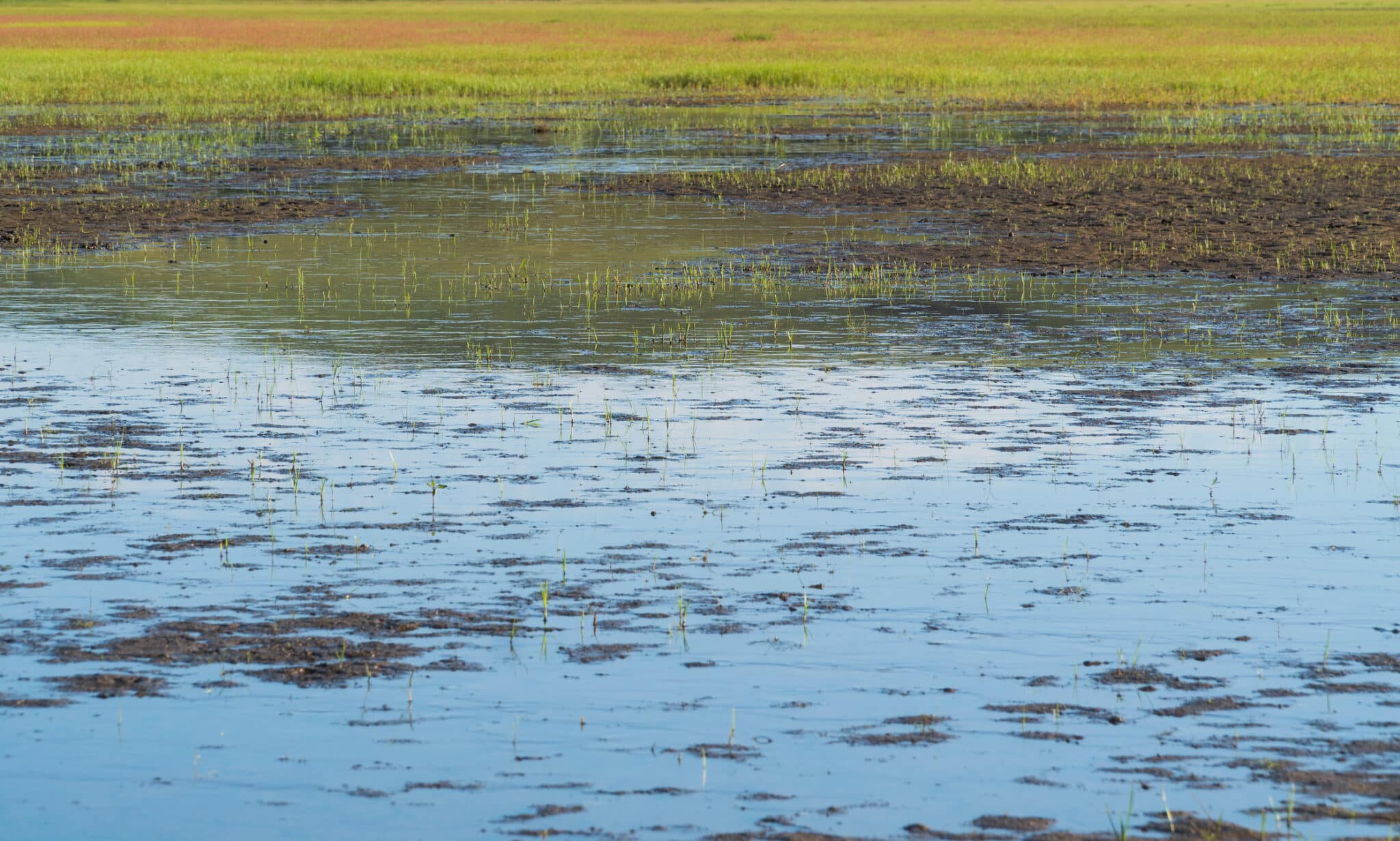Wetland Methane Emissions Reached ‘Exceptional’ Levels in 2020 and 2021

 Why you can trust us
Why you can trust us
Founded in 2005 as an Ohio-based environmental newspaper, EcoWatch is a digital platform dedicated to publishing quality, science-based content on environmental issues, causes, and solutions.
In 2021, the atmospheric concentrations of all three greenhouse gasses – carbon dioxide, nitrous oxide and methane – reached record levels. However, the numbers contained a mystery. Why exactly have methane concentrations been accelerating since 2007?
Now, a new study published in Nature Climate Change Monday found that wetlands have been producing more and more methane (CH4) since 2000, with emissions reaching “exceptional” levels in 2020 and 2021.
“Our results suggest the probable emergence of a strong positive wetland CH4 feedback under current climate-change-driven warming and changes in precipitation,” the study authors wrote.
Methane is a concern from a climate perspective because it has 84 times the warming impact of carbon dioxide over a 20-year period. However, it also dissipates in the atmosphere after around a decade, which means targeting methane emissions is an opportunity to keep warming within 1.5 to two degrees above pre-industrial levels in the short term. However, as the climate warms, wetlands – which are touted as carbon sinks – shift to release larger amounts of methane, as Carbon Brief noted. This can happen as the wetlands of the Arctic permafrost thaw and the activity of methane-releasing microbes increases or as tropical wetlands expand amidst more extreme precipitation. A study released early this March from the U.S. Geological Survey (USGS) found that methane emissions from freshwater wetlands could increase by two to three times under moderate to severe warming. This is something that governments and scientists need to take into account.
“If we calculate how much to reduce our methane emissions without considering how warming is affecting the processes creating natural emissions, we risk missing the mark when we account for our mitigation efforts,” study co-lead author and USGS Research Ecologist Sheel Bansal said in a USGS press release.
The Nature Climate Change study looked at what is already happening as well as what might happen in the future. Researchers used both field measurements and reanalysis data that combined observations and models to run a model anticipating future emissions from both permafrost and tropical wetlands, Carbon Brief explained. What they discovered was that wetland methane emissions went up by 1.2 to 1.4 million tonnes per year since 2000, which beats the 0.9 million tonnes per year estimated by the worst-case scenario emissions pathway. In 2020 and 2021, emissions increased even further to four to 26 million tonnes in 2020 and 13 to 23 million tonnes in 2021 compared to the period between 2000 and 2006. So far, most of the emissions increases are coming from tropical wetlands, but the thawing permafrost remains a concern for the future. The results are especially concerning since the models used in major publications including the latest Intergovernmental Panel on Climate Change report do not include the way that wetland methane emissions rise with warming.
“The emergence of a wetland–climate feedback emphasizes that coordination between the scientific community on integrating rapidly changing biospheric processes within remaining carbon budgets is a priority for staying below 1.5 °C and 2.0 °C,” the study authors wrote.
Dr. Gabrielle Dreyfus, chief scientist at the nonprofit Institute for Governance and Sustainable Development who was not a part of the study, told Carbon Brief that the data might call for more than just the “rapid and deep” reductions to human methane emissions that the IPCC says is necessary to limit warming to 1.5 degrees Celsius.
“The gaps highlighted in this study point to a future where mitigating human-caused methane emissions may need to be supplemented with methane removal approaches,” Dreyfus said.
The findings come the same day as another paper published in Nature Climate Change that looked at the behavior of all three main greenhouse gasses across 167 wetlands in the Northern Hemisphere between 1990 and 2022 and found that their 100-year global warming potential went up 57 percent with just 1.5 to two degrees Celsius of warming.
“Our results show that warming undermines the mitigation potential of pristine wetlands even for a limited temperature increase of 1.5–2.0 °C, the main goal of the Paris Agreement,” the study authors wrote.
Subscribe to get exclusive updates in our daily newsletter!
By signing up, you agree to the Terms of Use and Privacy Policy & to receive electronic communications from EcoWatch Media Group, which may include marketing promotions, advertisements and sponsored content.

 233k
233k  41k
41k  Subscribe
Subscribe 




